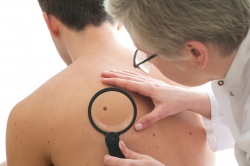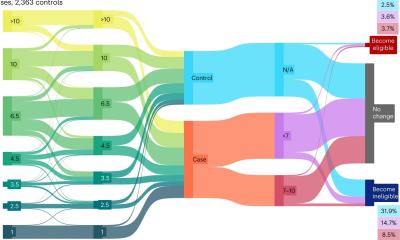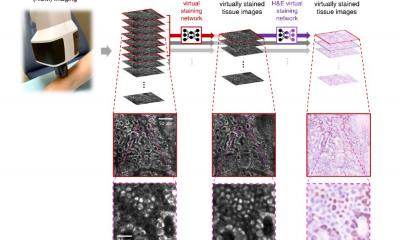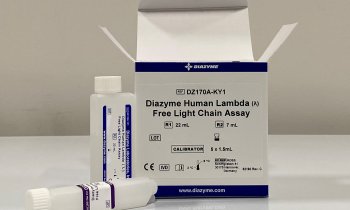Faster skin biopsies without anesthesia
Universidad Carlos III de Madrid (UC3M) and the Institute for Health Research of the Hospital "Ramón y Cajal" (IRYCIS have patented a new device for performing skin biopsies. With this new tool a skin biopsy can be performed with fewer instruments and the length of the procedure is shortened from thirty minutes to less than five.

Neither local anesthesia nor specialized personnel are required. As a result, faster diagnosis of pathologies such as skin cancer is possible.
Currently a skin biopsy involves cutting the base layer of the skin manually, removing it with forceps and sewing up the incision with one or two stitches. Thanks to the new automatic device, a simple click will be enough to obtain a sample, explains Jesús Meneses, one of the inventors from the MAQLAB Research Group at the UC3M Department of Mechanical Engineering.
This invention is an ergonomic tool which is "compact and easy to use," explains Meneses, and makes it possible to obtain a skin sample using only one single instrument. The new device is able to make the incision and remove the tissue sample automatically, and complies with all of the sanitation standards established by the Institute for Health Research "Ramón y Cajal" (IRYCIS), with whom UC3M has jointly applied for the patent.
This invention will aid in earlier detection of pathologies such as skin cancer and will also allow doctors to see a greater number of patients, which is of the utmost importance in fields such as dermatology which are overwhelmed by high patient demand, assures Emiliano Grillo, a dermatologist at Ramón y Cajal Hospital and an clinical research associate at the IRYCIS. In his own practice, Grillo identified the potential benefits of such an invention "in a doctor’s office overwhelmed by patient demand, such as a dermatology clinic." The invention would "make it possible for the patient to leave the doctor’s office with the diagnostic tests already done, and to begin earlier treatment if necessary."
The prototype of this device is ready to perform demonstrations and is protected by a patent application, indicates Cristina Castejón, a researcher at the MAQLAB Research Group. In addition, Juan Carlos García Prada, the head of the MAQLAB Research Group and professor of the Mechanical Engineering Department at UC3M, indicates that the next step is to seek ways to achieve greater social impact, a mission for which the relationship with the UC3M Science Park and the Innovation Unit at IRYCIS is "fundamental" as "they take care of the patent application process and the future technological transfer. In this case, it was the UC3M Science Park who informed us about the needs of doctors at the IRYCIS so that we could consider collaborating on a joint project, and we are proud of the result," he concludes.
This "automated skin biopsy device" is protected by Spanish patent application P201331644 and international patent application PCT/ES2014/070835 in the name of the Ramón y Cajal University Hospital Biomedical Research Foundation and Universidad Carlos III de Madrid. Currently, manufacturers of medical equipment are being sought to develop the product in accordance with licensing agreements.
Source: Universidad Carlos III de Madrid
12.05.2015











